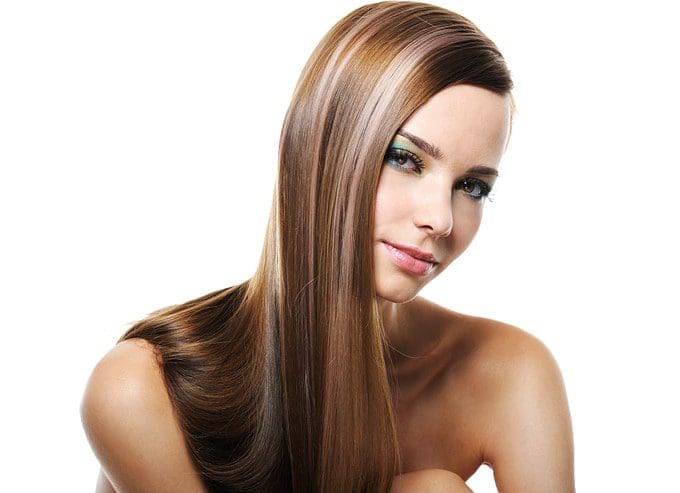words Alexa Wang
No matter your hair type, retaining moisture is the secret to a healthy, shiny mane. While our scalps do their best to produce oils to seal moisture inside our hair strands, it’s not enough to counter the barrage of drying elements we put our hair through on a daily basis.
If you want to support our hair’s fight against dryness, you may have to make the following changes to your hair routine.

Take More Time Between Washes
Believe it or not, washing your hair every day is probably unnecessary. Unless you’re one of the few people whose scalp overproduces sebum, the scalp’s natural oils,
your hair would be better off with only two or three washes a week.
Every time you shampoo, it disrupts the scalp’s microbiome, which is made up of thousands of healthy bacteria. Once this happens, your scalp dries out and the domino effect eventually leads to your hair.
If you must wash your hair more frequently, go for a dry shampoo or cleansing conditioner and skip on the shampoo.
Lower Your Shower Temperature
While a steamy shower can feel great on a cold day, it is absolute torture for your hair!
Hot water expands and opens your hair cuticles, resulting in lost moisture and brittleness. This mirrors the drying effect that intense heat during the summer months and dry winter air can have on your tresses.
Do your hair a favor and turn the temperature down a notch when you take a shower. If you can’t bear the thought of a completely cold shower, consider a 30-second blast of cold water at the very end. Not only will this liven up your strands, but it will also help you feel more awake!
Cut Your Split Ends
If you put the best moisturizing products in your hair and still get disappointing results, it may be time for a haircut.
As your hair grows, the older sections become weaker and more vulnerable to fraying. Exposure to heat, styling products, and chemical treatments wear the hair shaft down, eventually causing the ends to break apart. Due to this damage, split ends have a more difficult time retaining moisture than younger, healthier parts of the hair shaft.
If you notice that your ends tend to dry at warped speed, it’s a sign that split ends may be partially responsible for your dried, frizzed-out look. A hairdresser experienced with your hair type can fix the situation with a stylish cut.
It can be scary to see so much length disappear in one go, but hair without split ends will grow back faster and healthier. A small sacrifice now will do wonders for your hair in the long run.
Up Your Conditioner Game
If you’re really serious about getting rid of dry hair, your conditioning process will have to extend beyond the shower. There are several pre-and-post wash moisturizing products that are must-haves in any moisture retention routine.
Before your wash day, apply a rich pre-poo substance, like olive oil, coconut oil, or shea butter to your dry hair. You should allow the product to soak in for at least half an hour. If you have super-dry hair, you can even pre-poo overnight. Once a week, you can replace the pre-poo product with a hydrating hair mask. After washing and conditioning like normal, apply a leave-in conditioner to damp hair. Massage the produce gently through your ends.
Check Your Diet
In order to achieve truly healthy hair, you have to take a holistic approach. Sometimes, dry hair is a side effect of a vitamin deficiency. If you’re not consuming fruits and vegetables on a daily basis, you’re most likely missing out on important nutrients like vitamins C and A.
Eating foods rich in vitamin B like eggs and soy will improve your hair’s ability to produce keratin, a protein that makes your hair look shiny, thick, and smooth.
Try a Bond Builder
If your dry tresses are the result of serious bleach or chemical damage, you may need to pull in the big boys of the moisturizing product world.
Bond builders repair the naturally-occurring chemical bonds that can get ravaged by harsh hair treatments. If you want to give a bond builder a go, apply the product on dry hair as directed. Follow this with a rinse, shampoo, and deep conditioning.
Most people can benefit from a weekly bond building treatment. If your hair is really damaged, you can up the frequency to three times a week.








